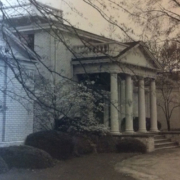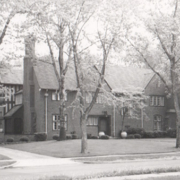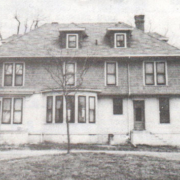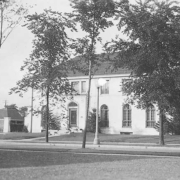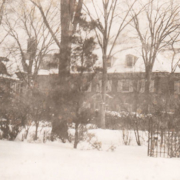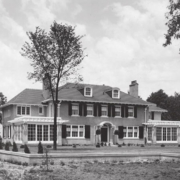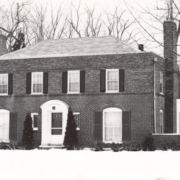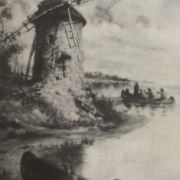Historical Architecture of Grosse Pointe – Thomas Jefferson Comes to Grosse Pointe – 320 Provencal
While Grosse Pointe has an abundance of wonderfully designed homes in numerous architectural styles, designed by some of Detroit’s top creative talent there are instances when you come across something a little bit special. These homes are unique, from the architects who worked on them, to the buildings that inspired them.
Recently we covered the ‘precious gems from architectural masters’, the designer’s who came to Grosse Pointe to create one special project. One such designer that certainly fits into this category is Milton L. Grigg, the man who brought a little bit of Thomas Jefferson to Grosse Pointe in the shape of 320 Provencal.
Milton Grigg is best known for his work in the field of historic preservation. Born in Alexandra, Virginia in 1905 (he died in 1982) Grigg studied architecture at the University of Virginia. His first job was as a draughtsman on the Colonial Williamsburg restoration (between 1929 and 1933). He then established his own practice in Charlottesville in 1933, and worked on numerous major restoration projects in Virginia including Monticello along with several churches in Virginia. According to research on Artnosh K. Edward Lay, author of the Architecture of Jefferson County, called Grigg “one of the premier architectural restoration/preservationists of his time – always with an inquisitive mind on the forefront of architectural inquiry”.
Grigg took much of inspiration from historic buildings, changing the scale and creating many structures reminiscent of traditional Virginia architecture. K. Edward Lay describes Grigg’s method of design as ‘taking inspiration from historic buildings and reinterpreting the principles in them to fit contemporary needs’, working as a modernist within the Jeffersonian tradition. It is believed many of his residential projects include Jefferson inspired characteristics including classical ornamentations, octagonal rooms, practical design and understated elegance.
Having spent most of his career in Charlottesville, Grigg came to Grosse Pointe in the early 1950’s. The residence at 320 Provencal, completed in 1956 custom designed and built by Grigg, is an authentic reproduction of Thomas Jefferson’s Monticello, the primary plantation near Charlottesville Virginia built in 1772.
The house has many stunning features, and the following details are based on research found at the Grosse Pointe Historical Society.
Constructed of masonry the two-story house is 4,513 sq ft, with 4 bedrooms, a maids room and a bath house. The entrance to the home boasts a magnificent portico with four columns, believed to be a two thirds sized copy of the north portico found at Monticello. It is reported the front doors are mahogany, containing 480 pieces.
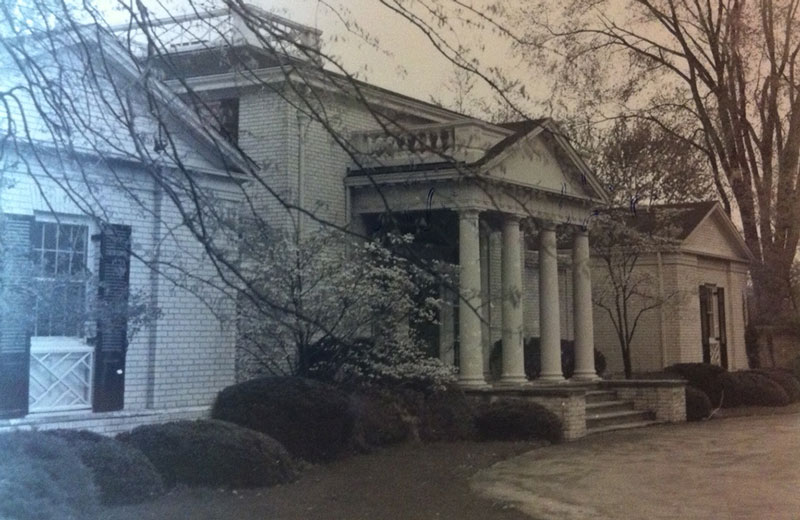
Once inside many of the rooms contain beautiful and extremely rare special features. The drawing room has a parquet floor, while the plaques in the mantel are antique Wedgewood. The research describes the special parquet floor as a copy of Thomas Jefferson’s.
In the living room there is a fabulous chandelier – bronze silver-plated (acquired from the Spanish Embassy in Washington), with large Waterford Crystals which are believed to have come from the Oval Room in the Whitehouse. The living room also features a walnut parquet floor along with historical silver sconces originally purchased for the Governors Place at Williamsburg.
The family room has a solid oak beam ceiling, brick walls and a hand-pegged hardwood floor. The ceiling friez contains 18 separate pieces of wood and contains a unique special rough plastered finish.
The formal garden was designed by landscape architect F. Bruce Winkworth, a prominent designer who had previously worked on several landscape projects in Grosse Pointe including the garden at 114 Lothrop in 1937. It is believed around $40,000 was spent in the garden at Provencal – an incredible $350,000 today.
320 Provencal is a one of a kind home, created by a rather unique designer who brought a little bit of Thomas Jefferson and the historic architectural style of Virginia to Grosse Pointe.
*Photos courtesy of the Higbie Maxon Agney archives unless stated.
Written by Katie Doelle
© 2016 Katie Doelle

